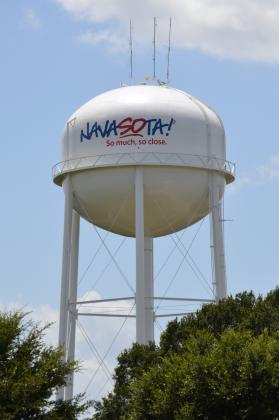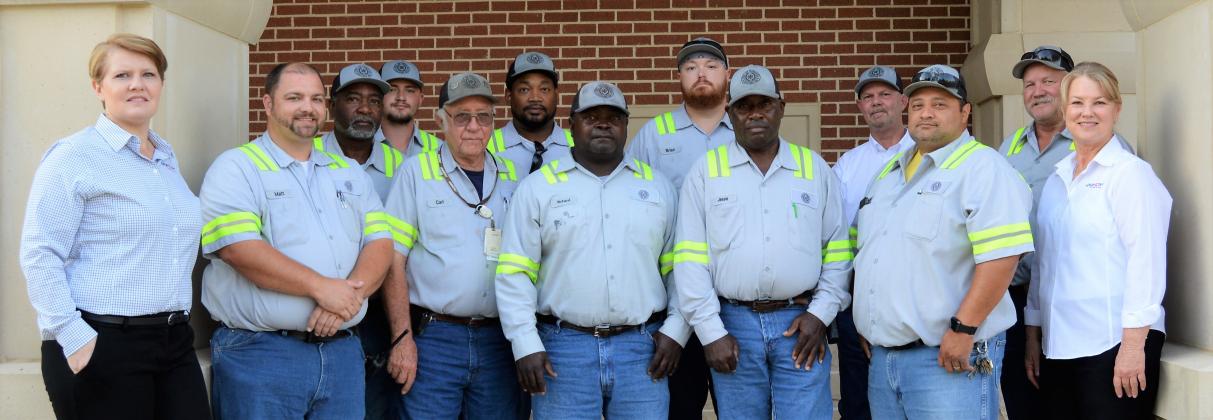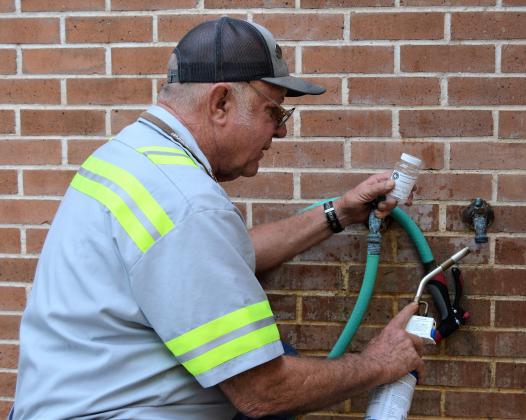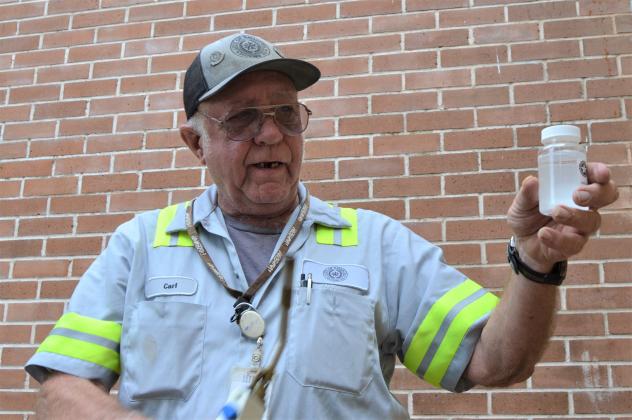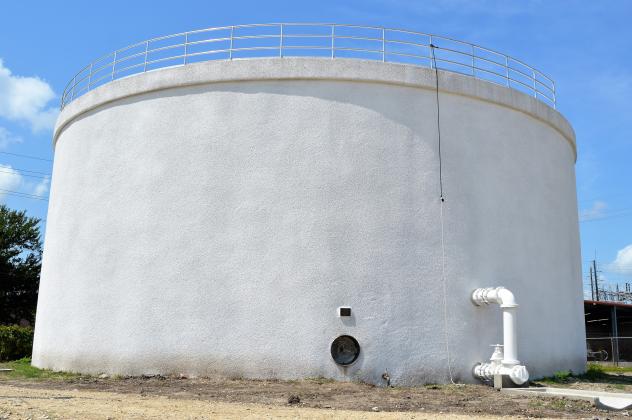Navasota “superior” water rating not left to chance
Part 1 of 4: Consider the “source”
While Navasota residents may have differences of opinion about the taste of local water or complaints about the level of hardness, they can be confident that the city’s water supply is safe. A lot of manhours, equipment and dollars go into ensuring its “superior” rating from the Texas Commission on Environmental Quality (TCEQ).
Texas cities get their water from several sources – lakes, reservoirs and aquifers, but basically the taste and even the feel of the water is determined by whether it’s surface water or groundwater, and how the water is treated. So why does Navasota tap water taste different from Houston’s – consider the “source.”
The mineral factor
Eighty-six percent of Houston’s water comes from the Trinity River through Lake Livingston and from the San Jacinto River through Lake Conroe and Lake Houston. The remaining 14% is groundwater from aquifers.
Navasota City Manager Brad Stafford said, “Generally, surface water will be a little softer because it’s rainwater. The only place you can get surface water is from rain, so rainwater is naturally going to have less minerals. And that will depend on the reservoir where it goes. Some reservoirs will have other minerals or metals. You have contact with fish, livestock getting into it, people fishing and boating. There’s a big difference in the filtering and treatment.”
In contrast, 100% of Navasota’s water supply is groundwater from the Catahoula/Jackson Group Formation, an aquifer located in southwest Grimes and Brazos counties.
Stafford said, “Groundwater is going to have more minerals and dissolved solids that make it taste different, look a little different and actually feel a little different. Aquifers are mostly rock formations but can have more minerals in one part of the country than in another.”
As for that iron taste, iron naturally occurs in groundwater and will vary from location to location depending on what’s underground, just as groundwater is different based on what’s under the ground.
Closer to home
According to Stafford, taste should not be affected by the type of pipe used in the city’s distribution system. That is one reason why lines are flushed on a regular basis and testing is done for polyvinylchlorides and matter that could come off pipes like lead soldering from copper piping.
However, the taste of tap water in older homes could differ from water from the tap in newer homes if copper or iron pipes were used.
Stafford said, “It can make a difference in what would be in your water at the tap because it goes through your personal piping.”
Remedies for water
customers
There is help for customers who struggle with rust colored towels, hard water or have low pressure.
For those stained whites and beiges, Utilities Administrative Assistant Jennifer Reyna advised that Rust-B-Gone, a rust and iron stain remover, may be added to washing machines to address discoloration.
Reyna said customers who experience brown water should call City Hall because it could be an indicator of a major leak or that something has “stirred up the system.”
She said, “We’ll dispatch someone to come flush out the hydrants in the area.”
There are options available to address hard water and calcium buildup and those include water softeners, whole house or under the sink filtration systems, faucet filtration systems or water pitchers with filters. The Navasota Annual Water Quality Report can be a resource for water customers working with vendors to resolve hard water or iron issues and is available online at navasotatx.gov.
For low water pressure, Reyna suggests checking the screens on faucets and other appliances but said that regulators on faucets slow down the water coming out of the faucet even though the pressure going in is 80 PSI, the maximum pressure allowed.
Utilities Director Jeff Greer said “For low pressure, the biggest problem we have are the outside filter systems. When you have moderately hard water, if you’re not changing your filter out monthly, you’re making a mistake.”
Stafford stressed that regardless of where the water supply comes from, the public water system in Texas is safe because of multiple tests performed by a third-party lab which tests for 205 constituents - “And Navasota meets the standard for every one of those.”
Next week: Part 2, “Monitoring Navasota’s water – not a job for amateurs!”

